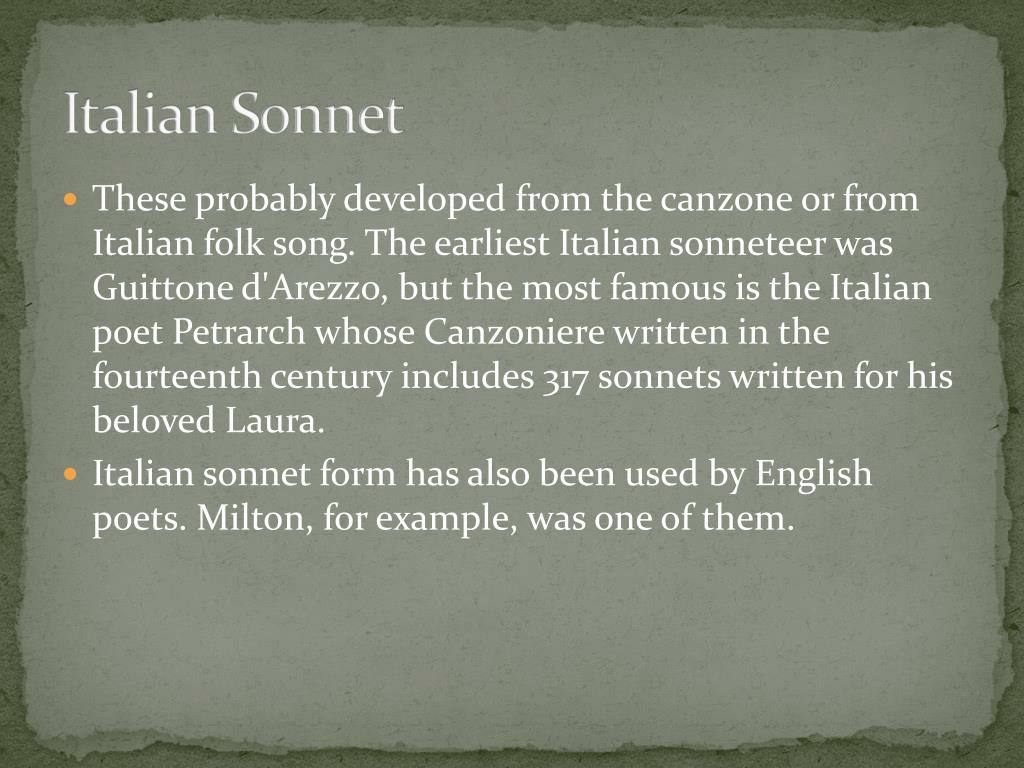

The dark lady is not physically attractive to the poet, for all her erotic appeal. 4, sonnet sequence, The beloved is a major interest of sonnet sequences, but. In Elizabethan days, so the poet tells us, black was not considered beautiful: "In the old age black was not counted fair, / Or, if it were, it bore not beauty's name." However, what is considered beautiful - at least to the poet - has changed "now is black beauty's successive heir." This change in what is considered beautiful is the poet's main concern here in Sonnet 127 and in succeeding sonnets. The title of the collection came from a line in her Sonnets from the Portuguese. The narrator defends the poet's unfashionable taste in brunettes. The sonnet 127,the first sonnet concerning the dark lady begins with a repulsive note towards the conventional view of beautiful women.

#Famous sonnet sequences series#
William Ellery Leonard, Elinor Wylie, Edna St. Petrarchs famous sonnet sequence was written as a series of love poems to an idealized and idolized mistress named Laura.

The rest of the poemwhich is all one sentencethen explores this central problem, and, in doing so, creates a poem through the very action of questioning the limits of poetry. So, the introduction of a dark lady instead of a fair woman as the subject matter of his amorous poems is certainly a different initiative taken by Shakespeare. Some of the most famous sonnet sequences in English literature are those by Shakespeare (154 in the group), Sidneys Astrophel and Stella, Spensers Amoretti, Rossettis House of Life, and Mrs. The opening line of Shakespeare’s Sonnet 18 questions the validity of poetic metaphors or similes to describe the woman the poet loves. The English sonnet is traditionally divided into three 4-line stanzas and an ending couplet, and traditionally follows the rhyme scheme abab cdcd efef gg. The beloved must be fair-complexioned according to the courtly tradition. The complete text of Elizabeth Barrett Brownings famous sonnet sequence.


 0 kommentar(er)
0 kommentar(er)
